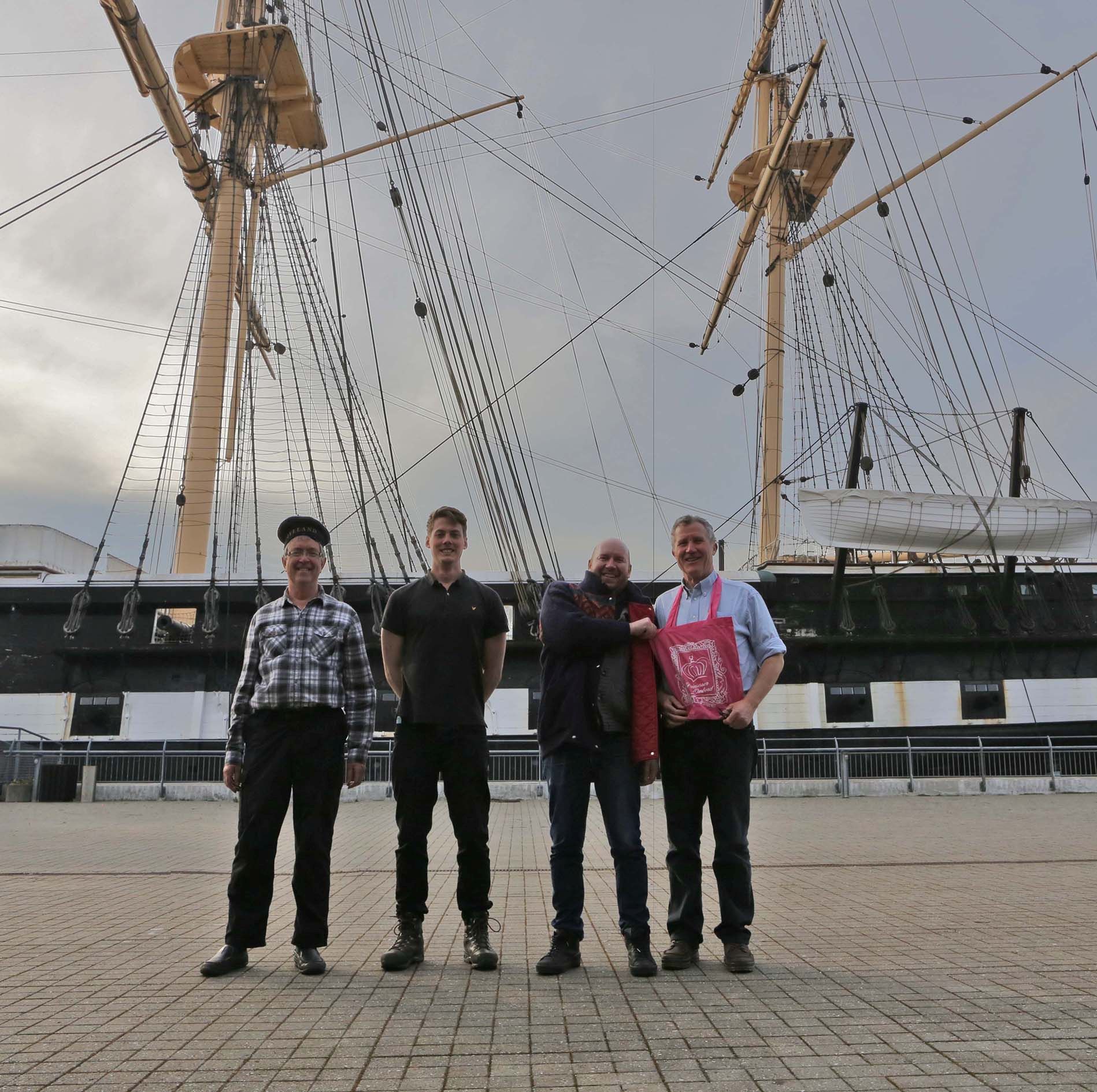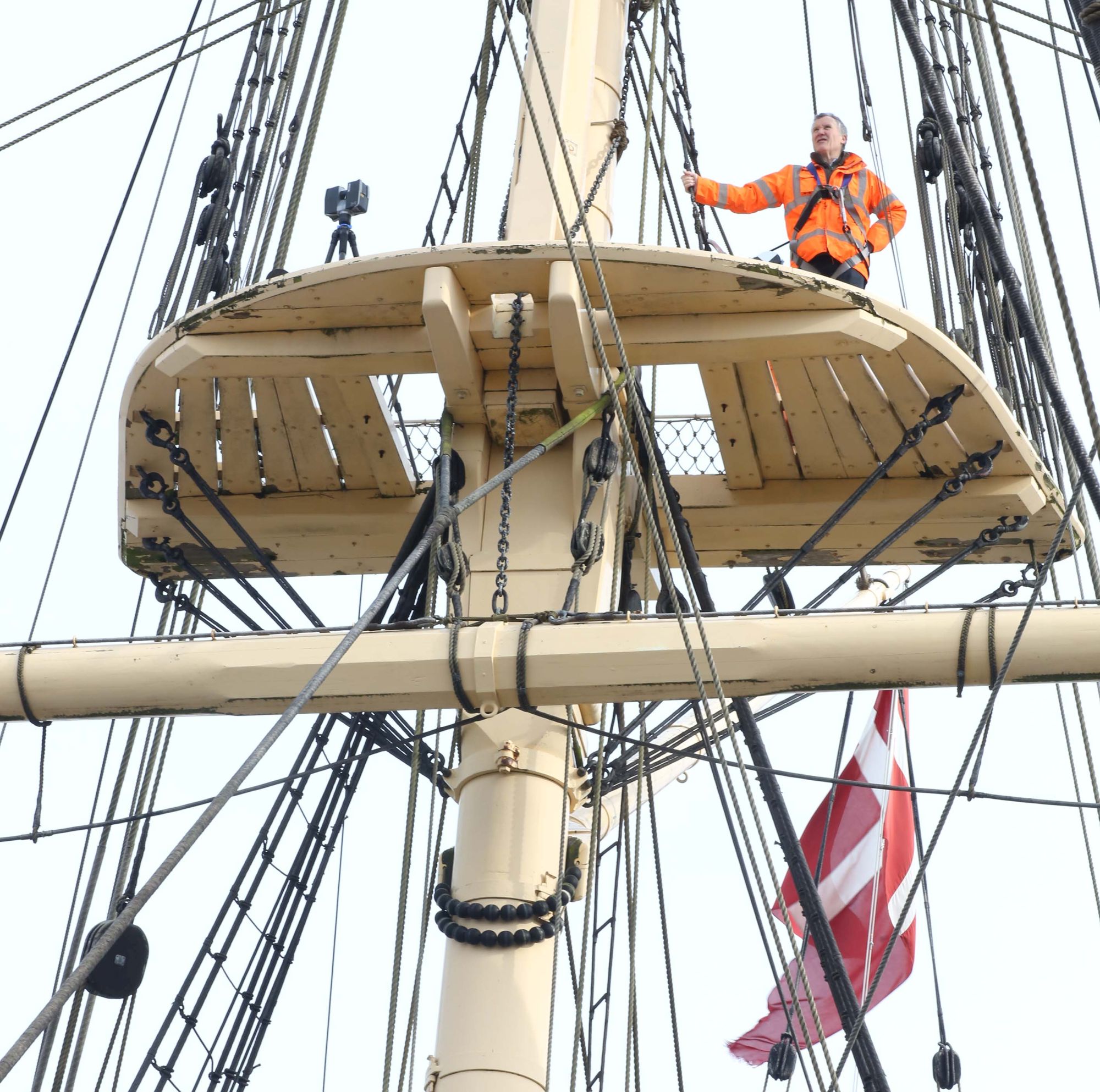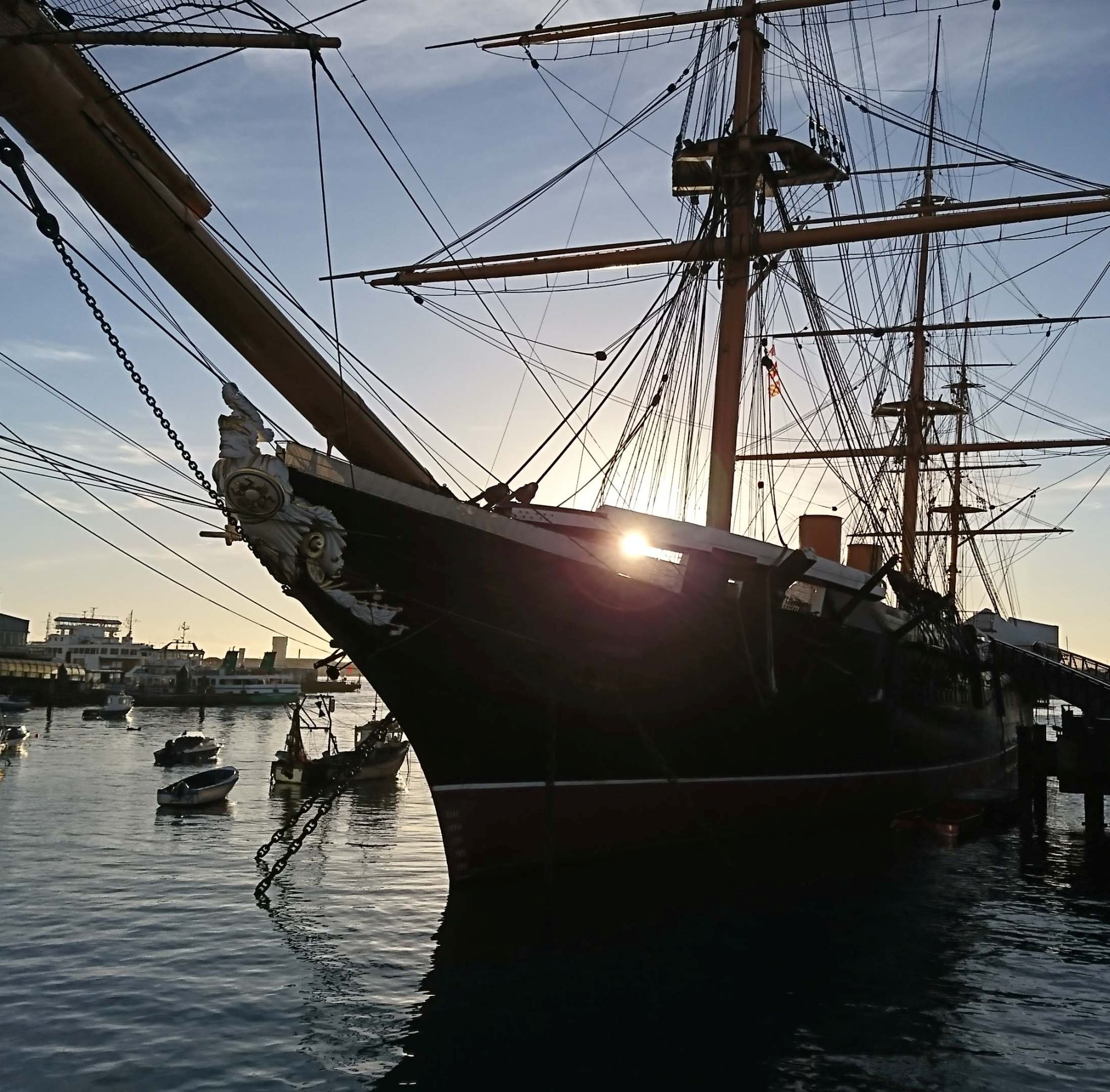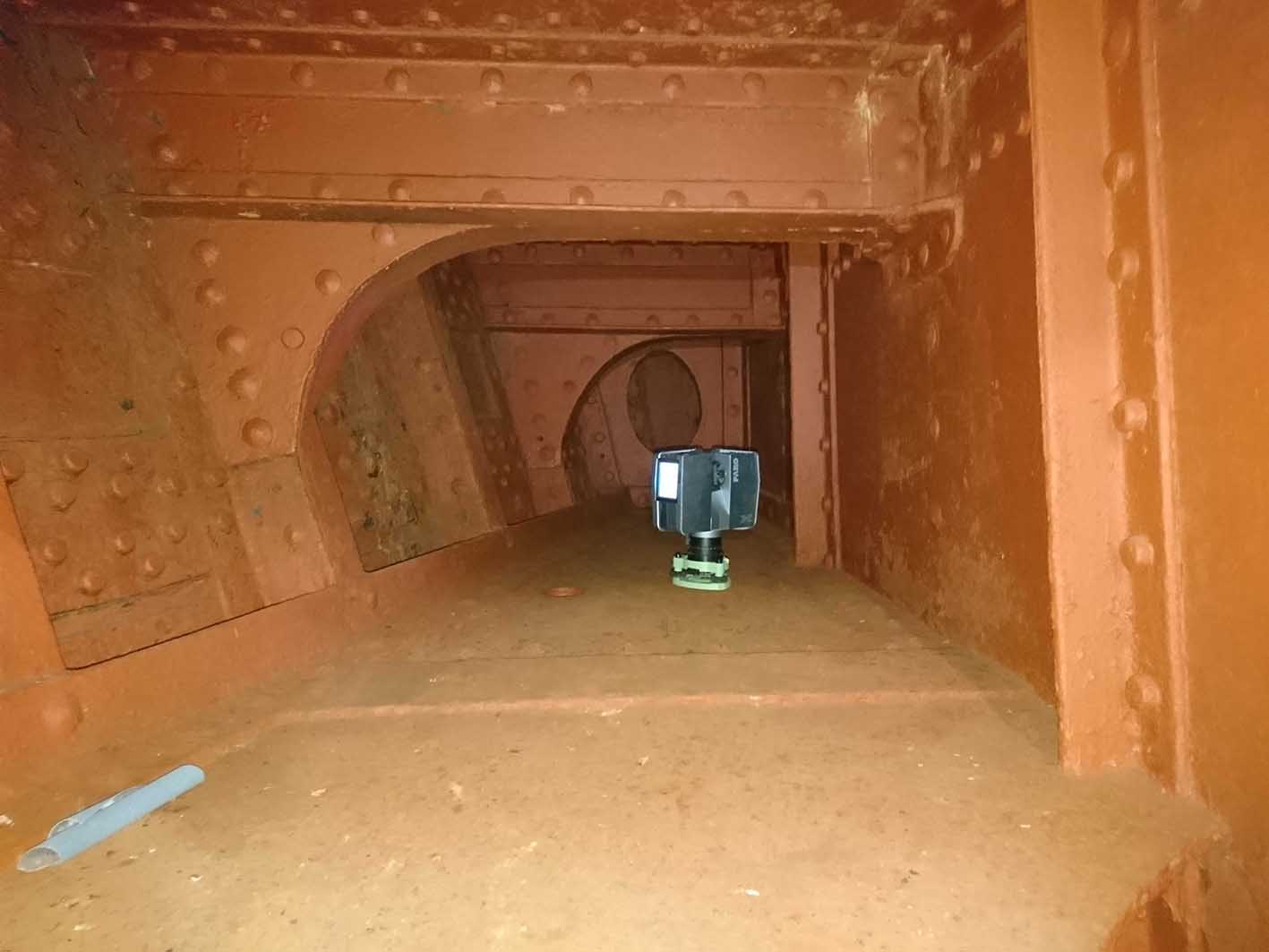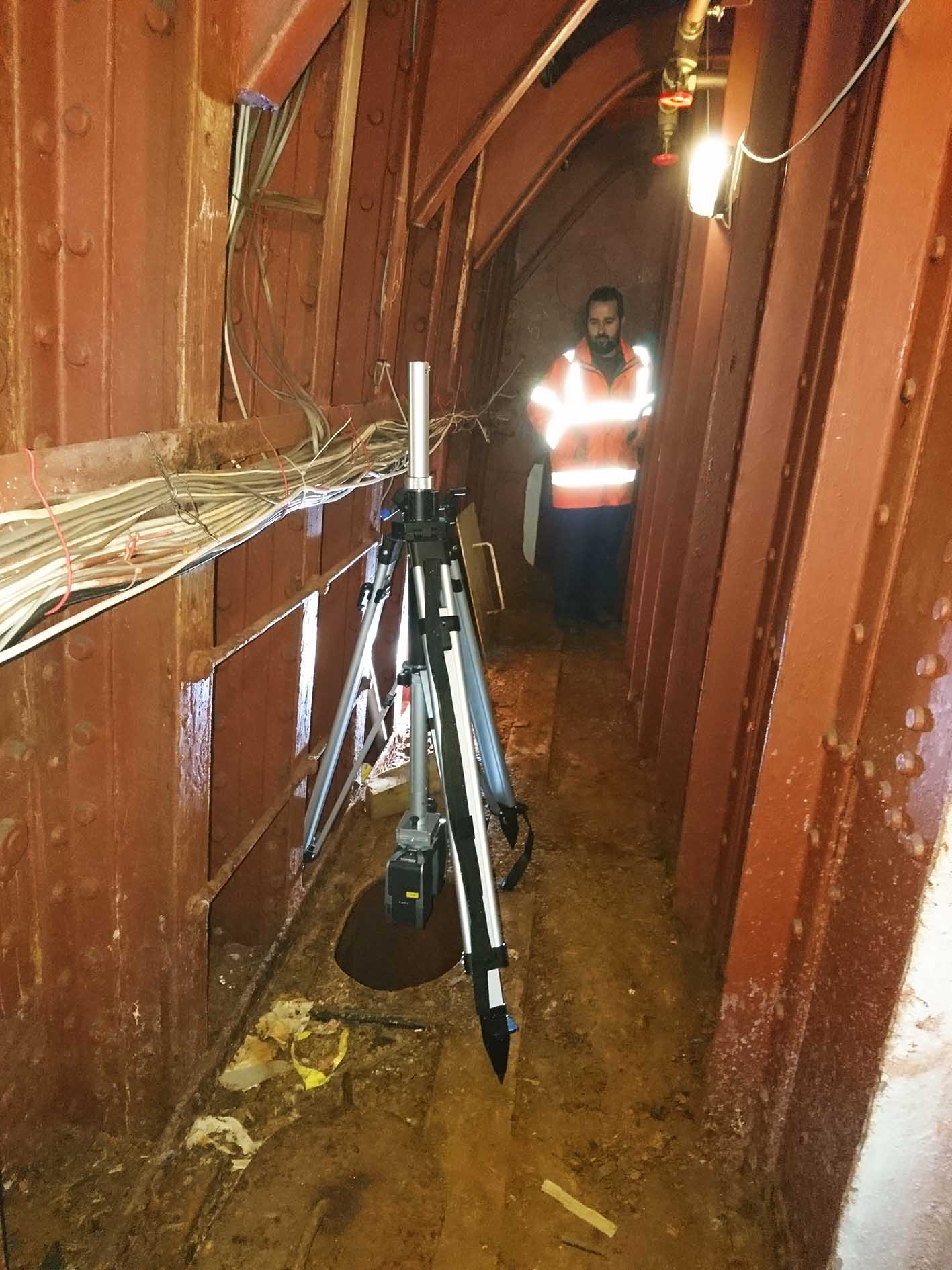Fregatten Jylland & HMS Warrior
Following our highly successful survey of HMS Victory, 2017 has brought two futher surveys of historic ships both built in around 1860. In April we travelled to Ebeltoft in Denmark to laser-scan the Fregatten Jylland for the owners and Fenton Holloway, structural engineers based in Bristol.
In November we were the sucessful tenderer for the comprehensive laser scanning of HMS Warrior for the National Museum of the Royal Navy in Portsmouth. A total of 1700 scans were needed to cover the spaces within the ship, it's complicated construction meaning that some of the many voids required someone in the mould of Houdini to scan.
Built in the 1860s, the Fregatten Jylland was a frigate in the Danish Navy of the period. At 102 metres she was one of the longest ships constructed of wood and employed diagonal hull timbers to maintain rigidity. The ship was fully laser-scanned using Faro x130 scanners to all areas including the hold, decks, external hull and masts. Scanning the latter from the crows-nests was one of the more exciting surveying moments of the year!
The nearly 1000 scans will be kept by the Fregatten Jylland Trust as a record of the ship as well as being used to analyse the ships' shape and deformation whiist in dry dock. Our thanks to Bo Laursen for looking after us so well.
To find out more go to www.visitdenmark.nl/nl/denmark/fregatten-jylland-gdk784989
HMS Warrior was one of the first large warships to be comissioned by the Royal Navy to be contructed of iron and proved such a deterrant, that she never saw active service. She is still afloat in a berth within sight of HMS Victory and makes for an impressive sight at 128 metres long. Special equipment has been used to record the ship including an inverted tripod that allows scanning into voids from above. This of course, reduces the danger accociated with entering such spaces.
Our thanks to NMRN's Arabella and Roy for helping understand the ship and identify all the access hatches!
